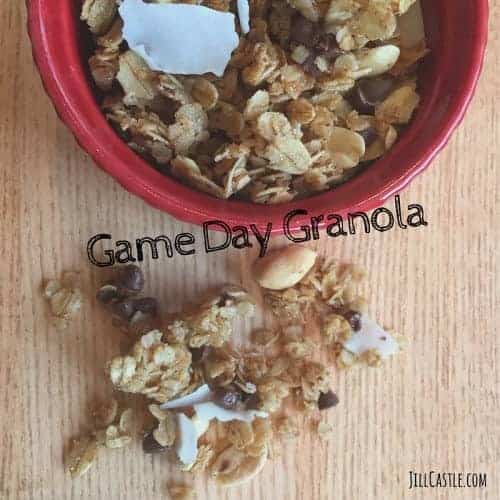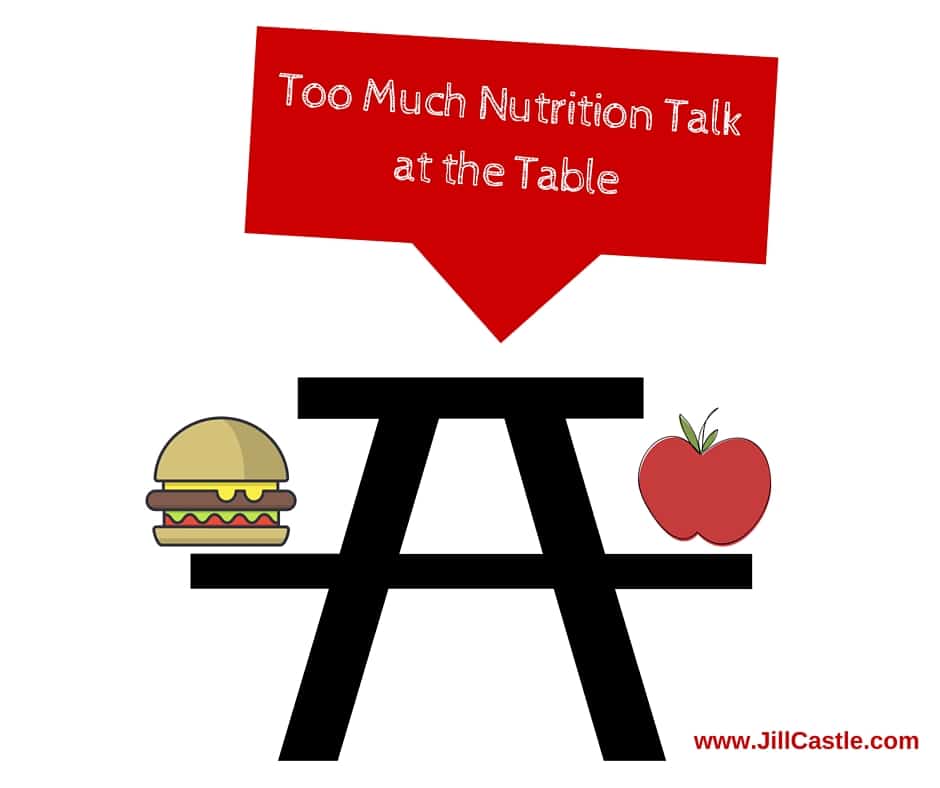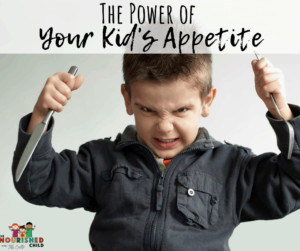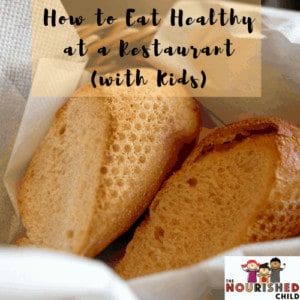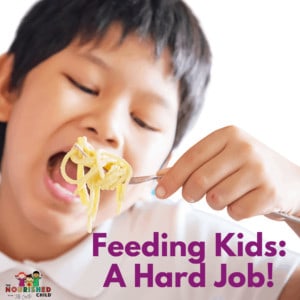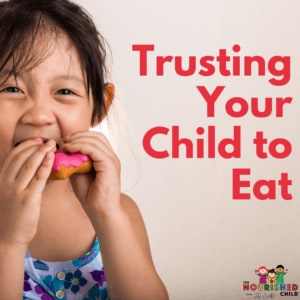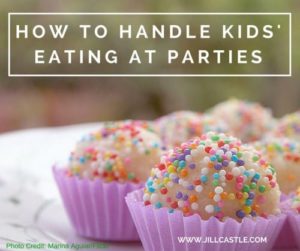Why Do Kids Eat When They’re Not Hungry?
March 8, 2016
Is your child eating when not hungry? Learn why your child eats when he’s not hungry and how you can help.
Eating in the absence of hunger is learned in childhood and something that can be prevented (and even turned around).
In this article, I’ll uncover the main reasons kids eat when they’re not hungry and give you some tips to handle this challenging and confusing situation.
{Read: Healthy Food Doesn’t Guarantee a Healthy Child}
Why Do Kids Eat When They’re Not Hungry? Click To Tweet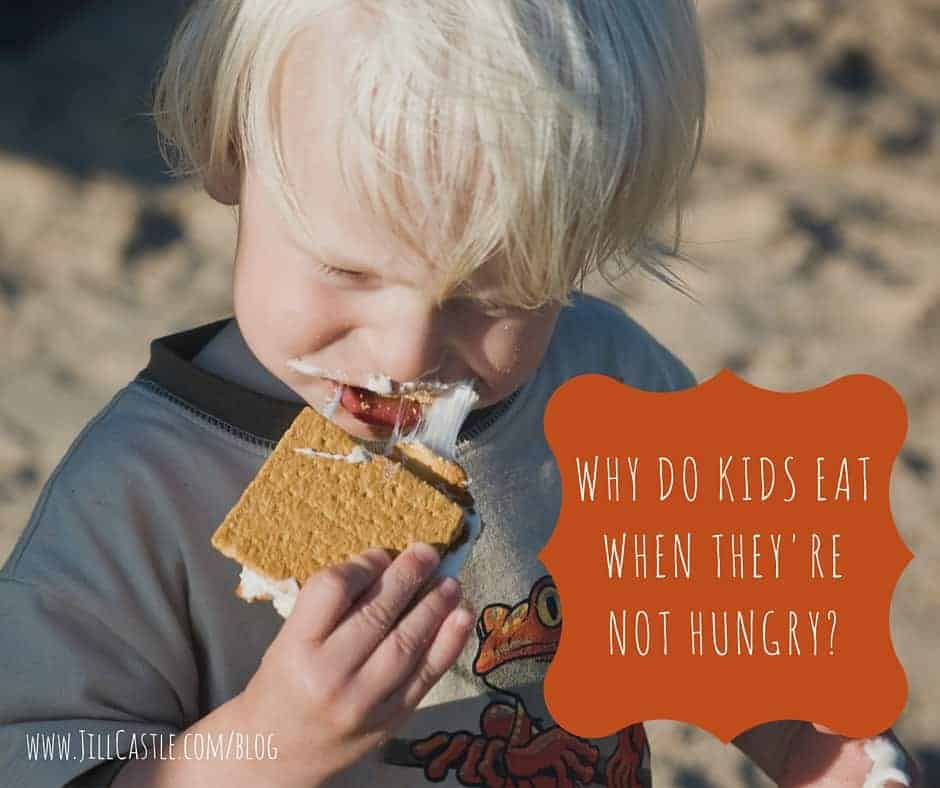
Eating When Not Hungry (Eating in the Absence of Hunger)
Eating is complex, and as your child gets older he may eat for many different reasons. Physical hunger and what I call “head” hunger, or eating because he thinks he’s hungry, are two main reasons.
For instance, your child just ate dinner (a good one), but states he is hungry 30 minutes later. Physically, he is unlikely to be truly hungry, but his head is telling him to eat.
Eating in the Absence of Hunger, (EAH) is a term researchers use to describe eating highly palatable foods when not hungry.
This has been associated with extra weight gain in boys and girls under the age of twelve.
The tendency tends to develop between the ages of five and nine.
Awareness of food and environmental triggers such as timing, party foods and social eating becomes more prominent in your child’s life.
It‘s important for you to understand EAH because it can be the basis for your child’s excess eating.
The reasons for EAH in children are being teased out, but may include:
A poor sense of hunger and fullness cues (your child is out of touch with body signals related to eating)
Heightened response to food (your child eats food because it looks good, was previously enjoyed or liked, others are eating it, or is a scarce or tightly regulated food, for example)
Low inhibitory control (your child is impulsive around food)
Emotional reasons (your child is eating to calm or comfort feelings)
Boredom (your child is eating because there is the perception that there is nothing else to do)
Has experienced restrictive feeding practices (your child eats because a food that was tightly controlled or off limits is now available)
Of course, helping your child tune in to their appetite and eat (mostly) for hunger is the goal.
There will always be times when there are other reasons for eating, but these shouldn’t be the primary reasons.
Teach Your Child about Appetite
Teaching your child about physical hunger is an important step toward helping him develop an internal sense of appetite. Or, when to eat and when to stop eating.
This is something that can start in the early years, but is an ongoing endeavor.
Early on, you can use terms like hungry belly and happy belly to help your toddler associate hunger and fullness cues.
Encourage your child to associate eating with his sense of appetite cues: What is your body telling you?
Identifying emotional triggers for eating is another way to help your child regulate his eating.
When your child is sad, disappointed, lonely, or stressed, encourage her to talk to someone about those feelings.
Communicating emotions is a healthy way to deal with them, instead of turning to food to numb strong, negative emotions.
How to Help Kids Who Eat When Not Hungry
I’ve learned a lot from helping families through this challenge. Here are some of my tips.
1. Optimize Food Balance
If your child seems to respond to highly palatable foods such as desserts, teach him the 90:10 Rule. It will help minimize (but not eliminate) sweets and treats in the diet.
Don’t panic or get too worked up about the fact that your child likes sweets. Many kids are responsive to treats and even impulsive around them!
2. Use Food Boundaries
Try to set boundaries and use a structure with meals and snacks, which will help moderate your child’s exposure to them.
The antidote to boredom is keeping your child occupied with activities that don’t involve food.
One easy way to downplay extra food and eating is to close the kitchen between meals and snacks.
Closing the kitchen directs your child away from food and toward other activities.
3. Watch Out for Mindless Eating
Avoid eating when riding in the car or watching TV will also help discourage mindless eating. Mindless eating is eating without paying attention to satisfaction and fullness, or the quantities of food consumed.
You want your child to pay attention to food when he is eating, so that he can fully enjoy it and be aware of his body responses to it.
4. Are You Too Restrictive with Food?
Your child may be triggered to eat when not hungry if you have been overly controlling or restrictive about palatable foods such as sweets.
Restrictive feeding may drive a desire for the restricted food.
For instance, when you tightly control or even avoid sugar in your home, your child may demonstrate a strong desire for it and may overeat sugary foods when they’re available.
The Goal is a Healthy Relationship with Food
Helping your child develop a healthy relationship with food isn’t merely about making sure he or she selects healthy food to eat.
You are helping him regulate his food choices and consumption, based on staying in touch with his internal appetite.
Does your child eat when not hungry? What have you done to help?
Need More Help with Feeding Your Child?
I’ve written books and developed programs for parents to help them nourish their children, inside and out. Check out my books, programs and my podcast for more support and help!

